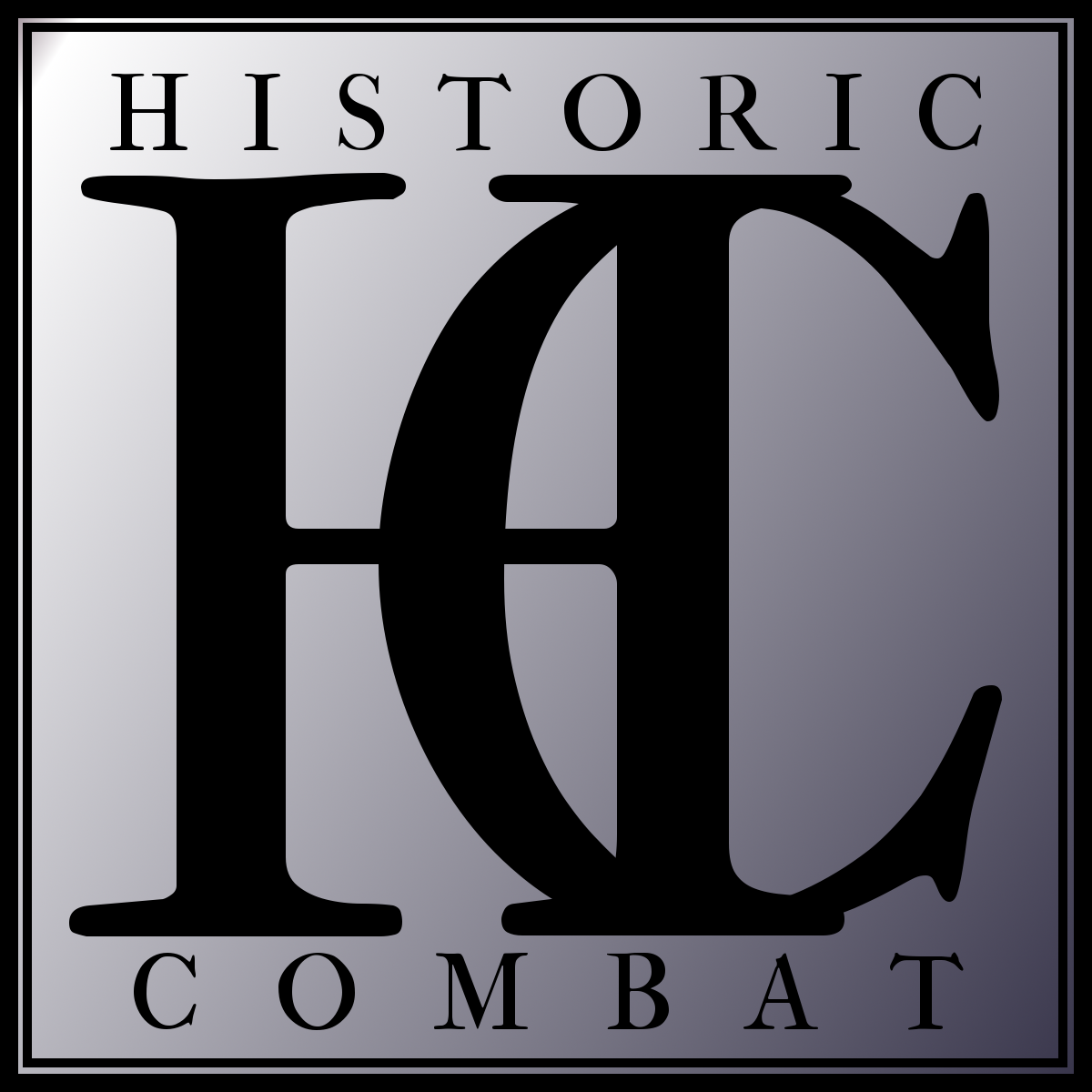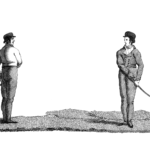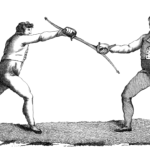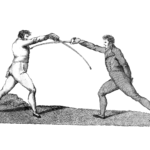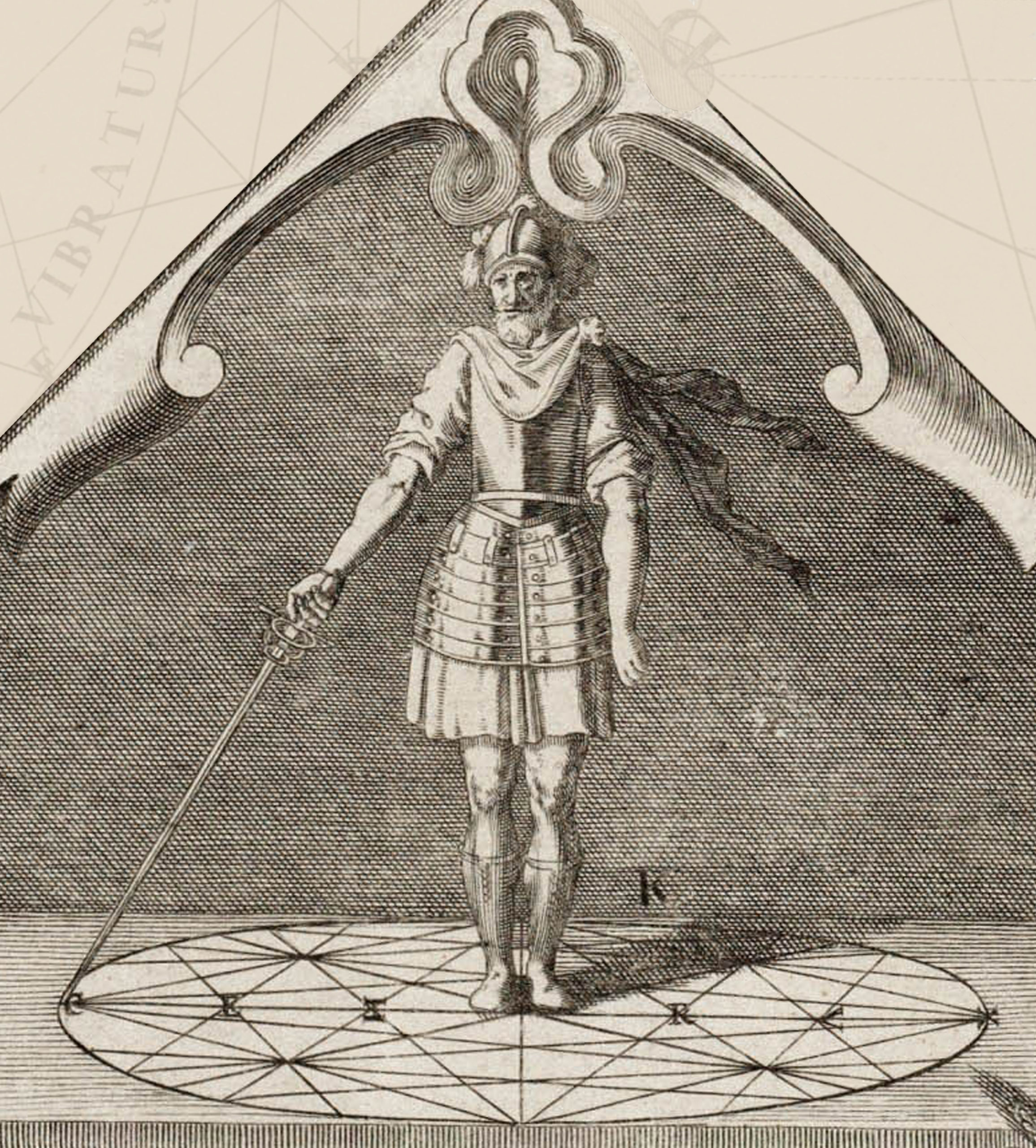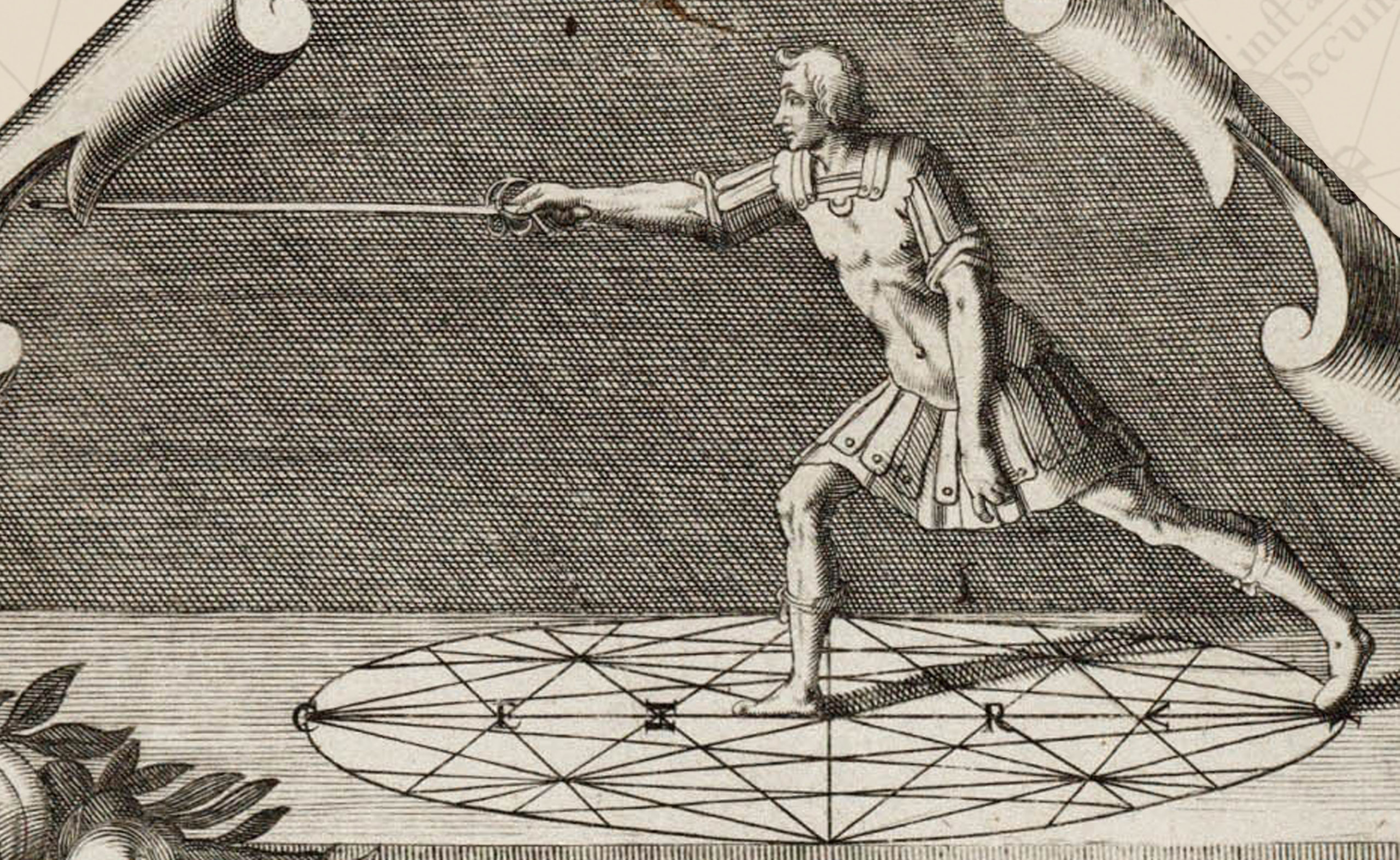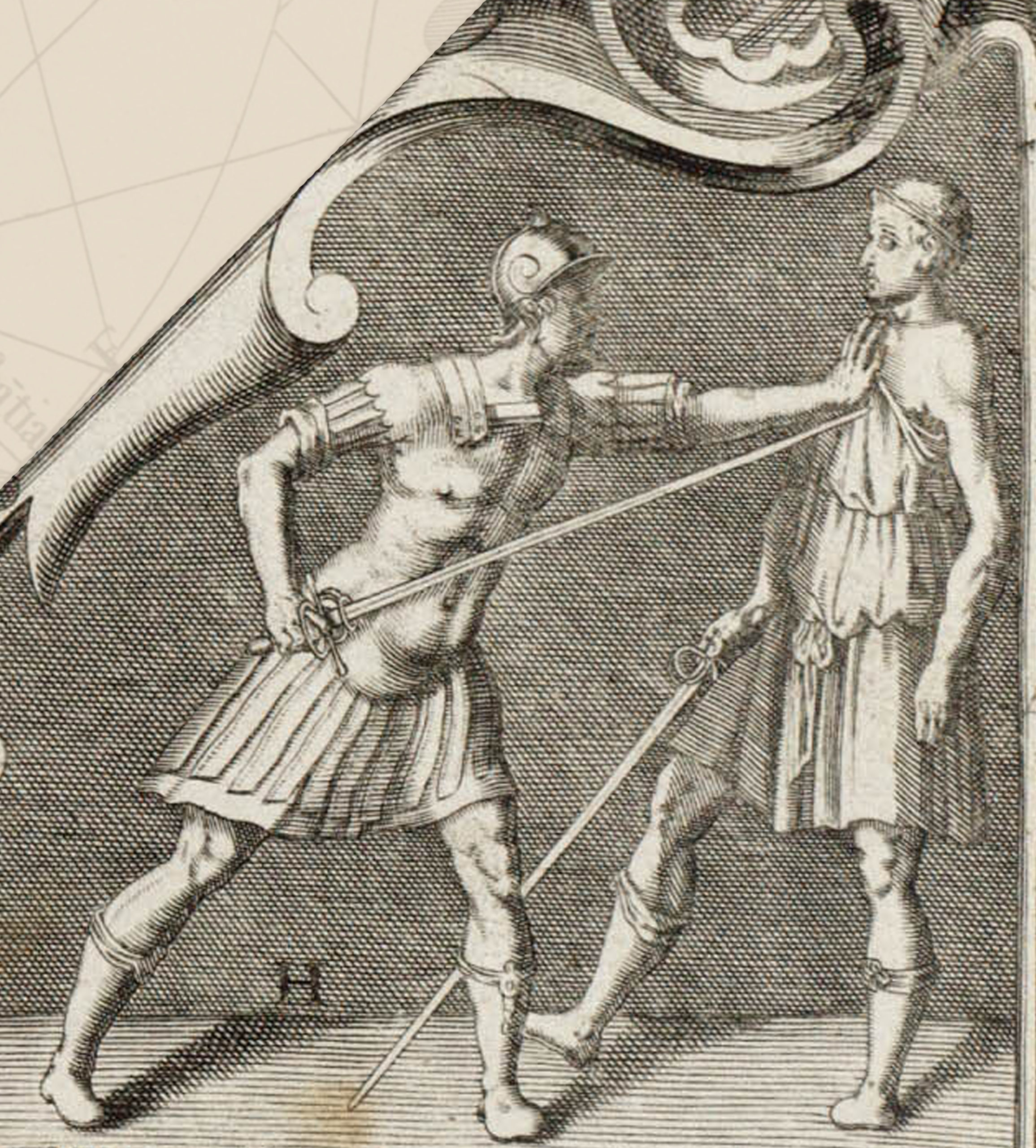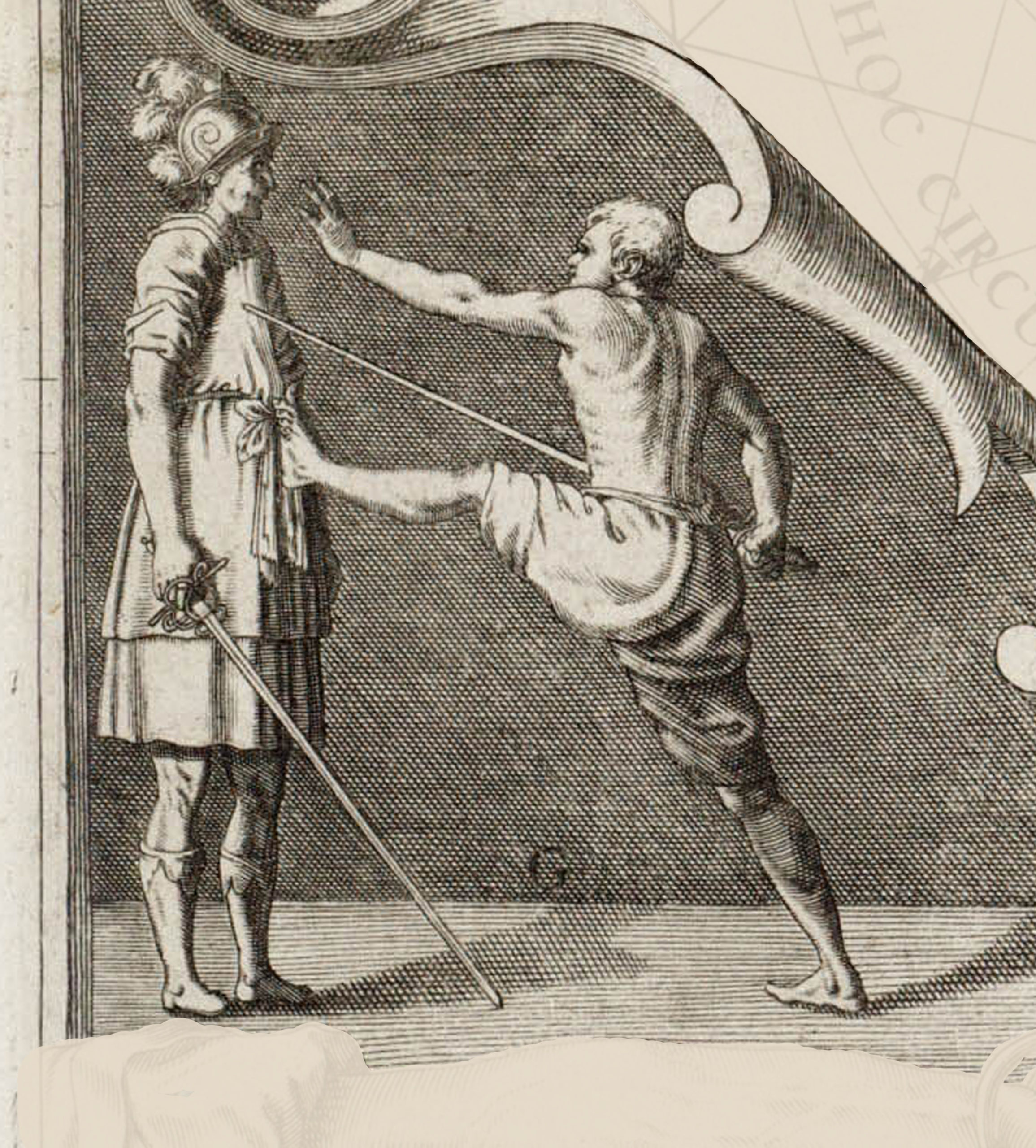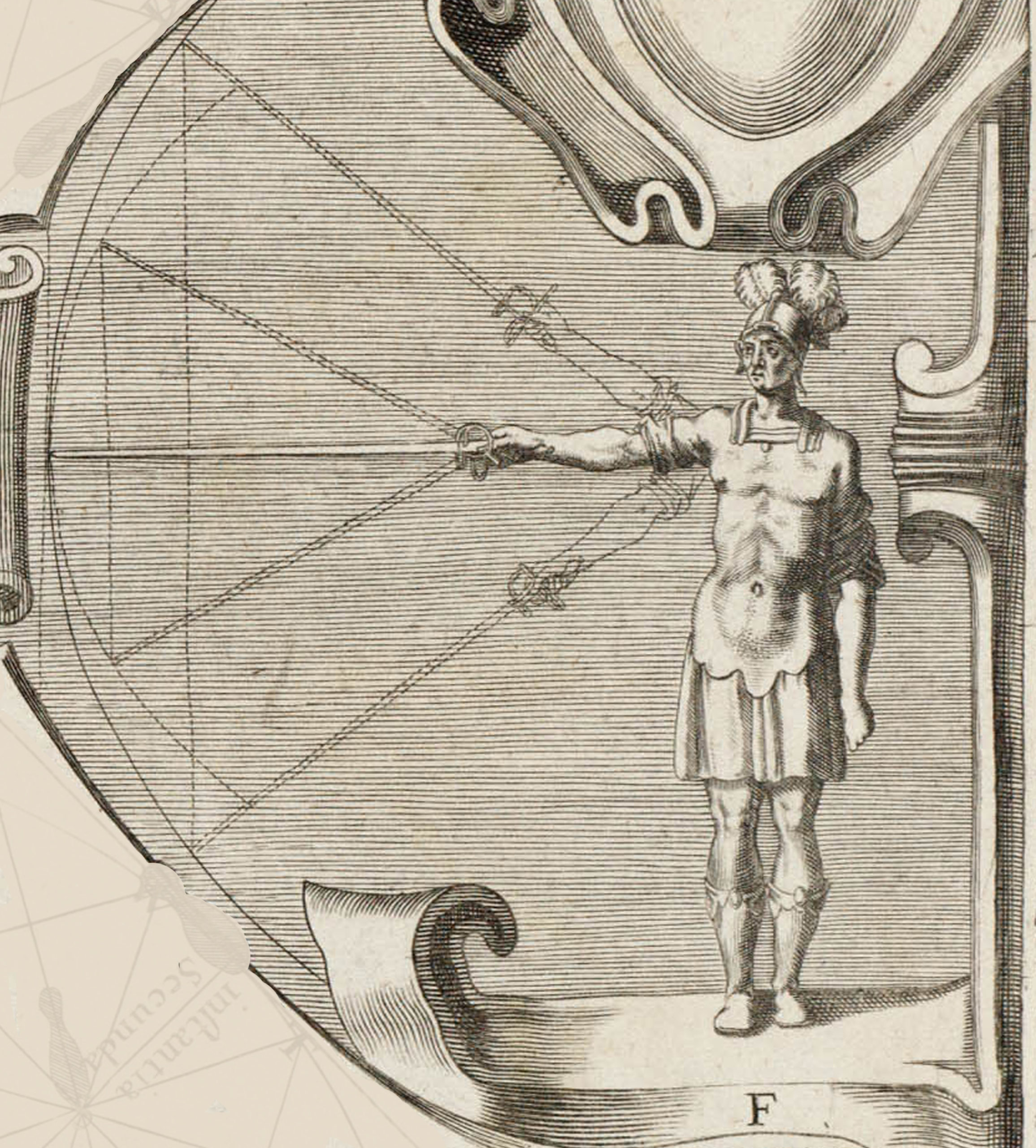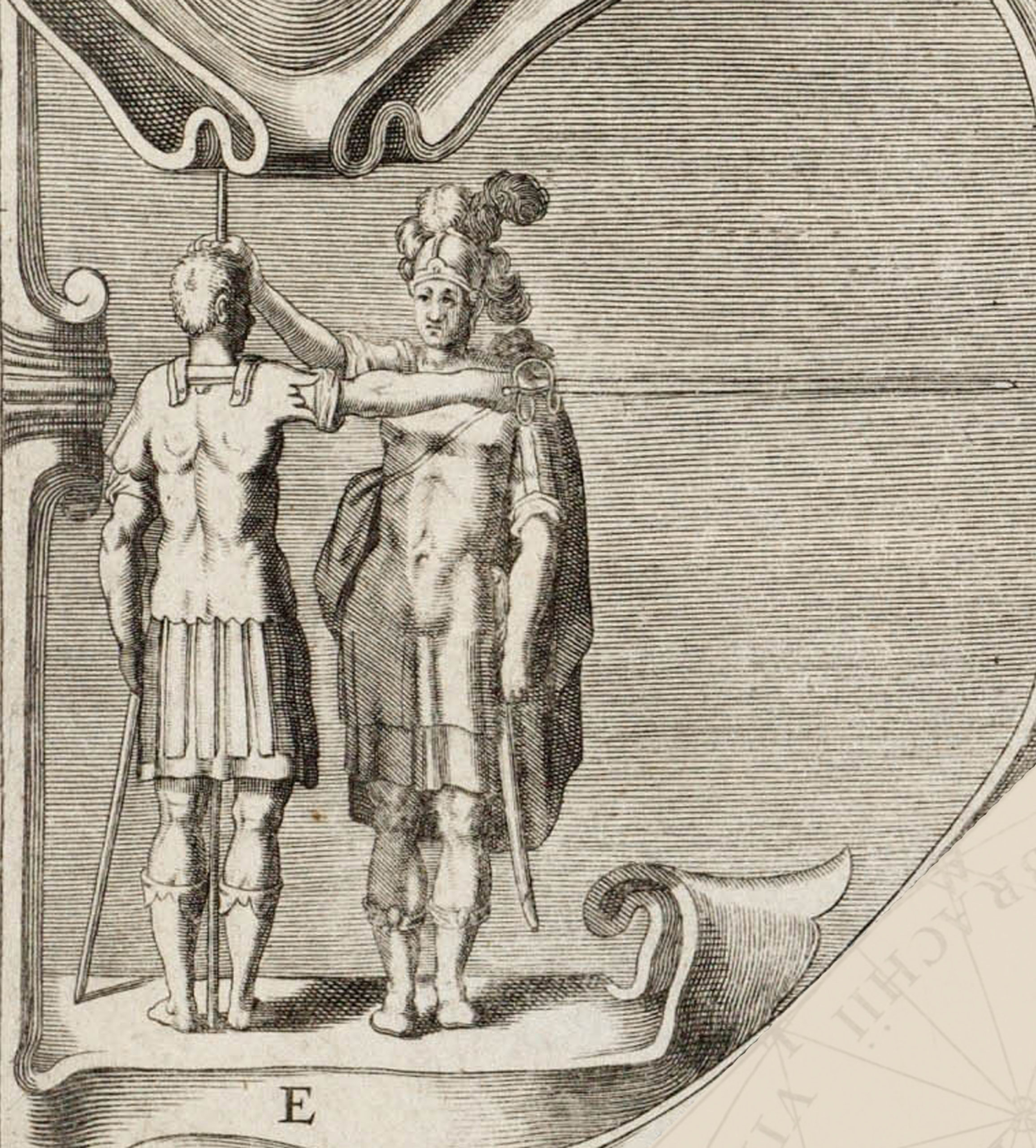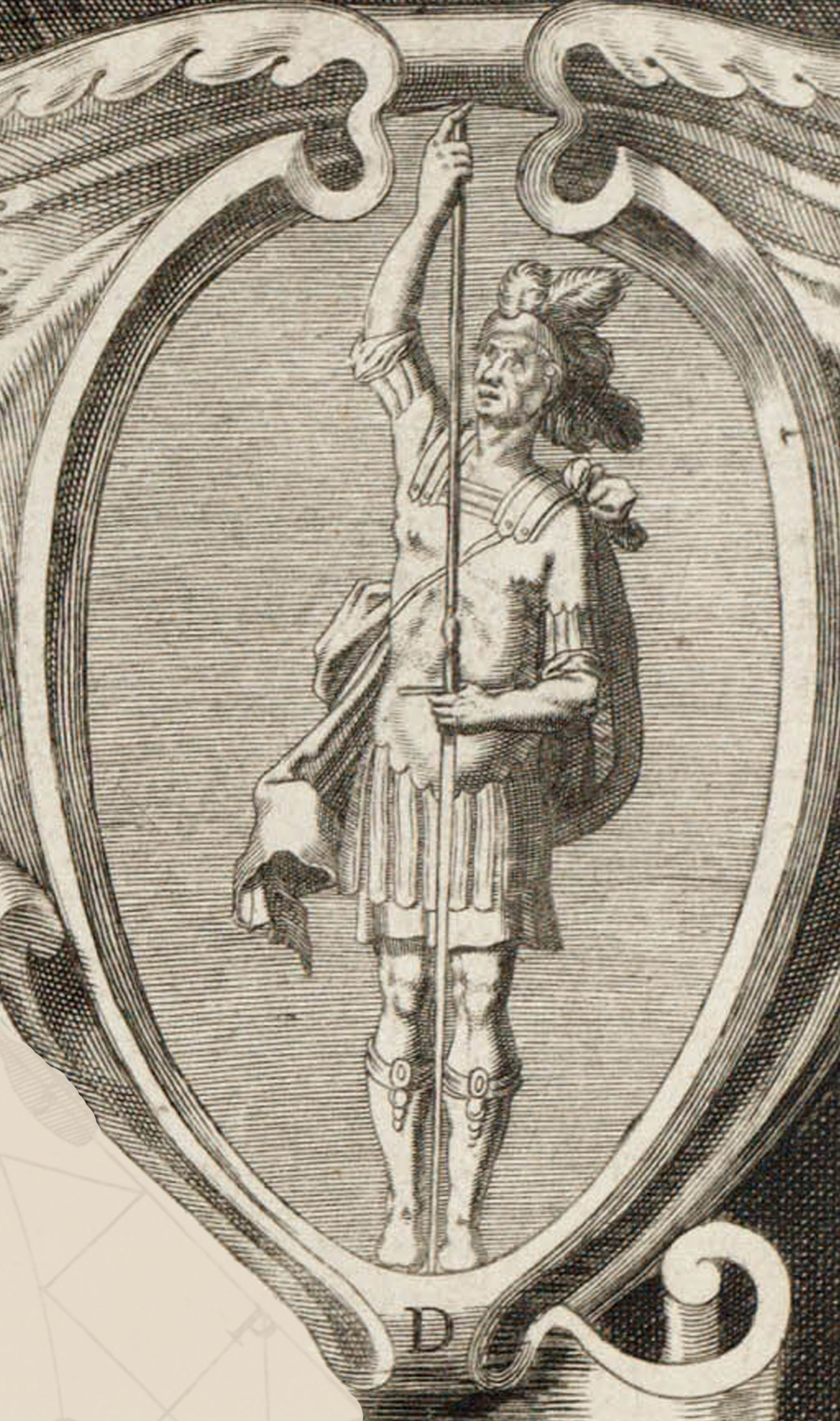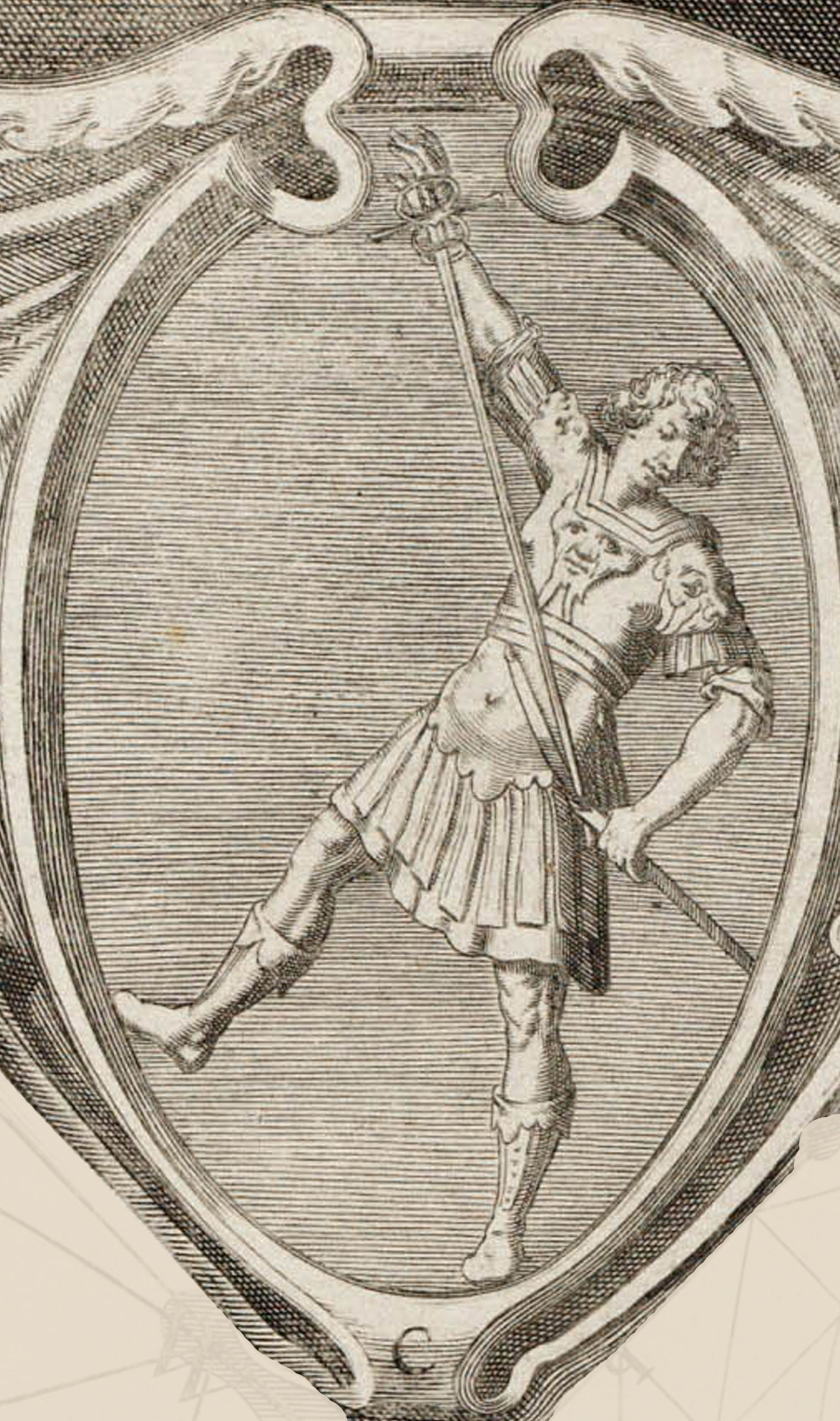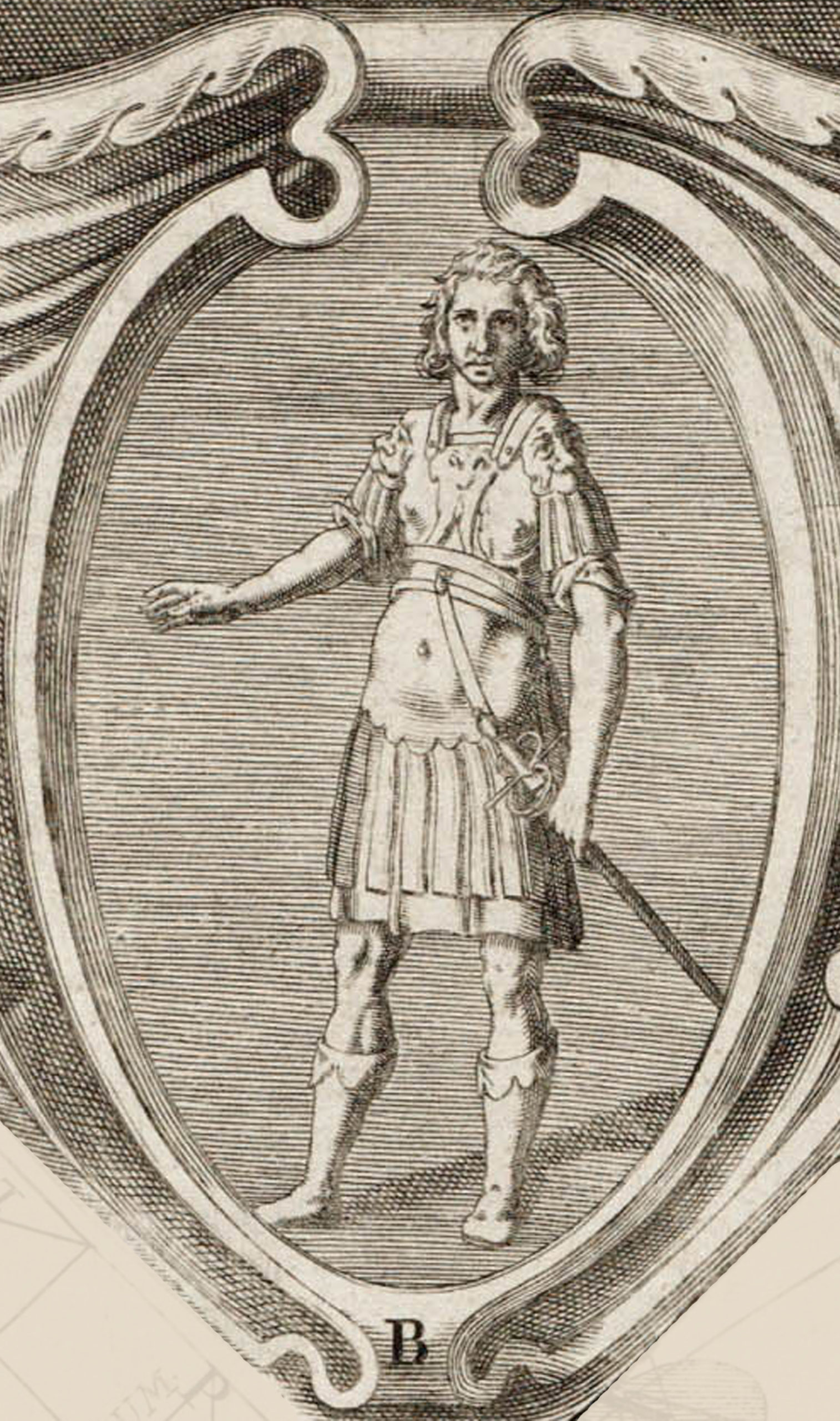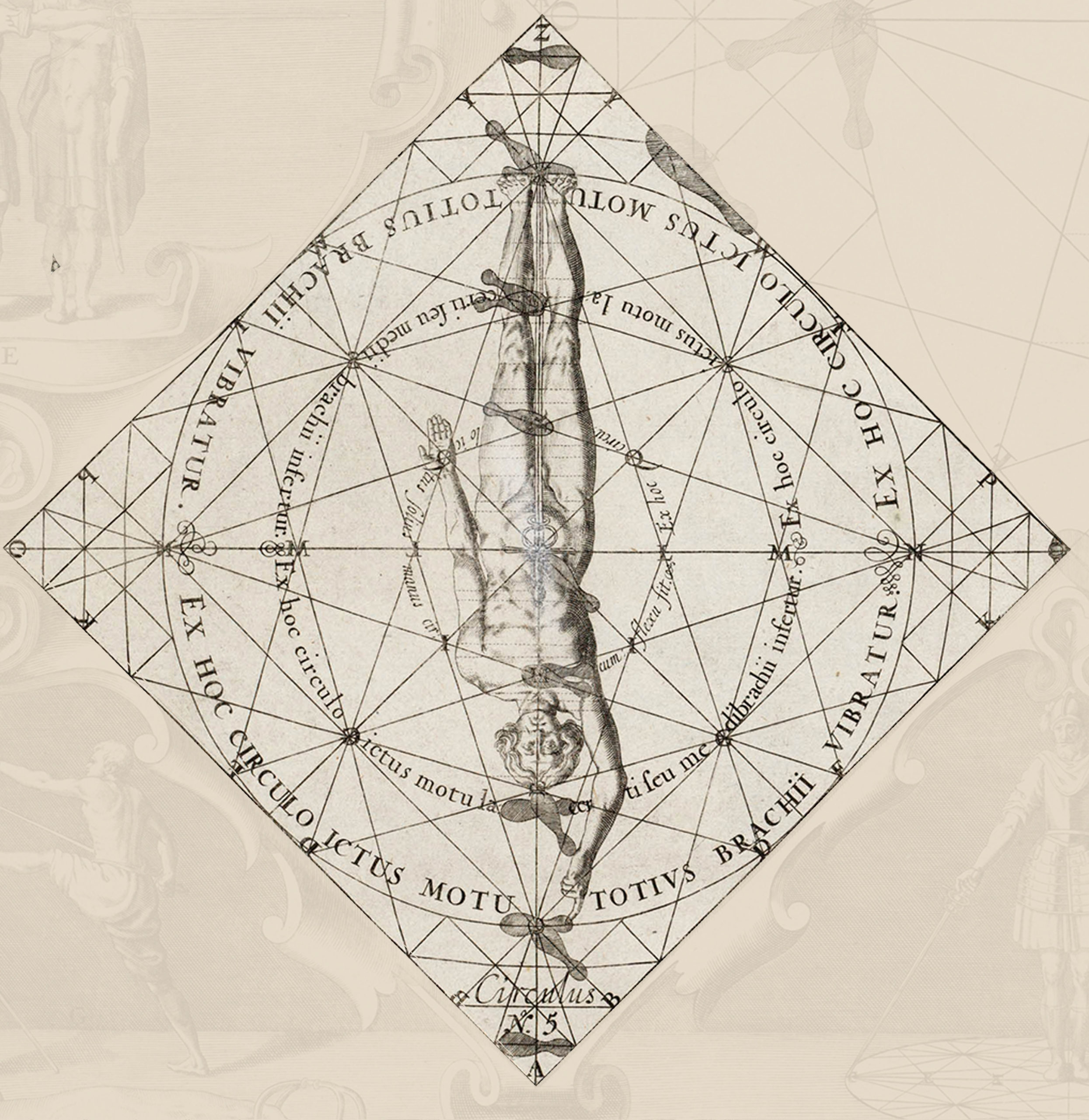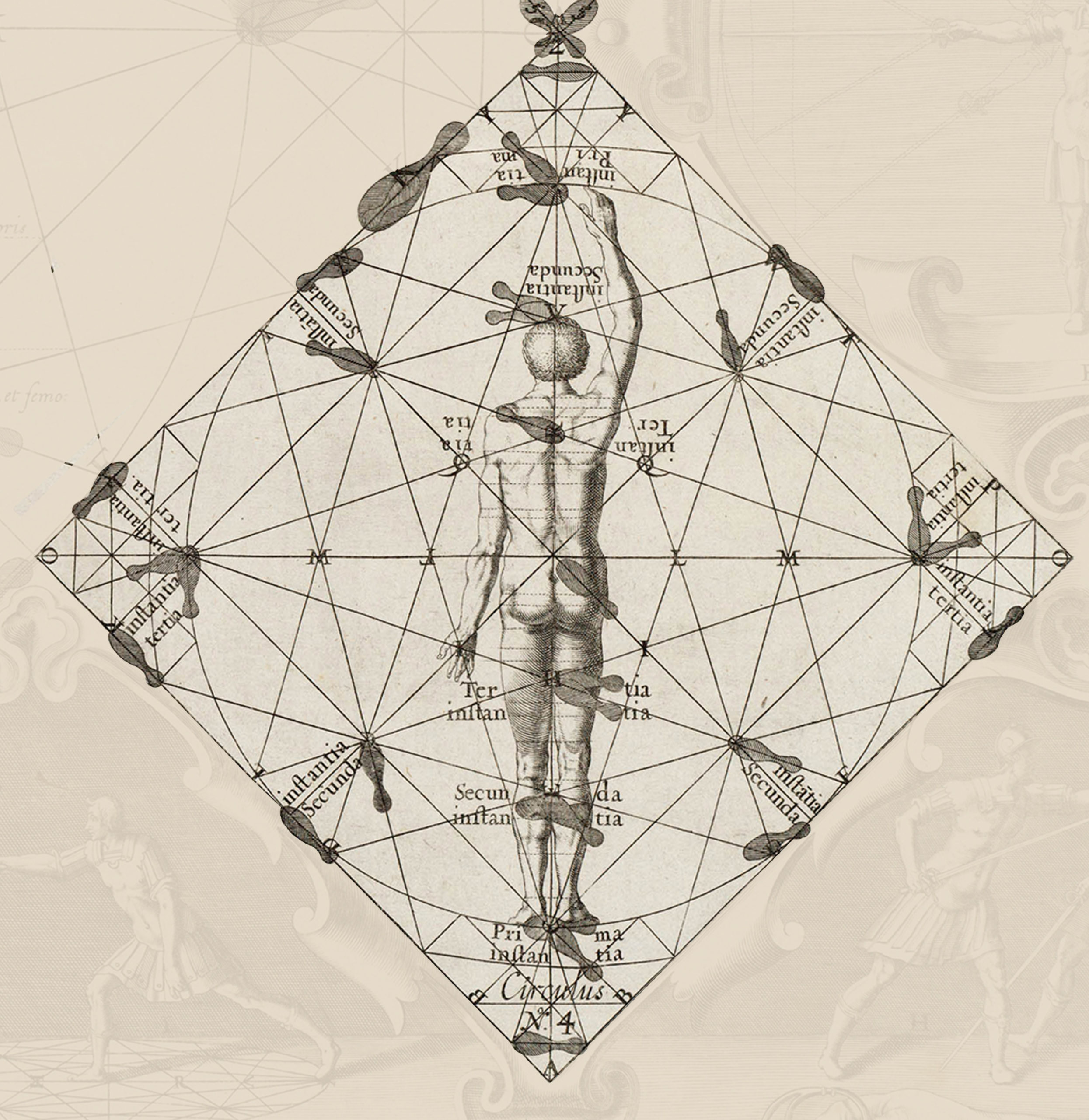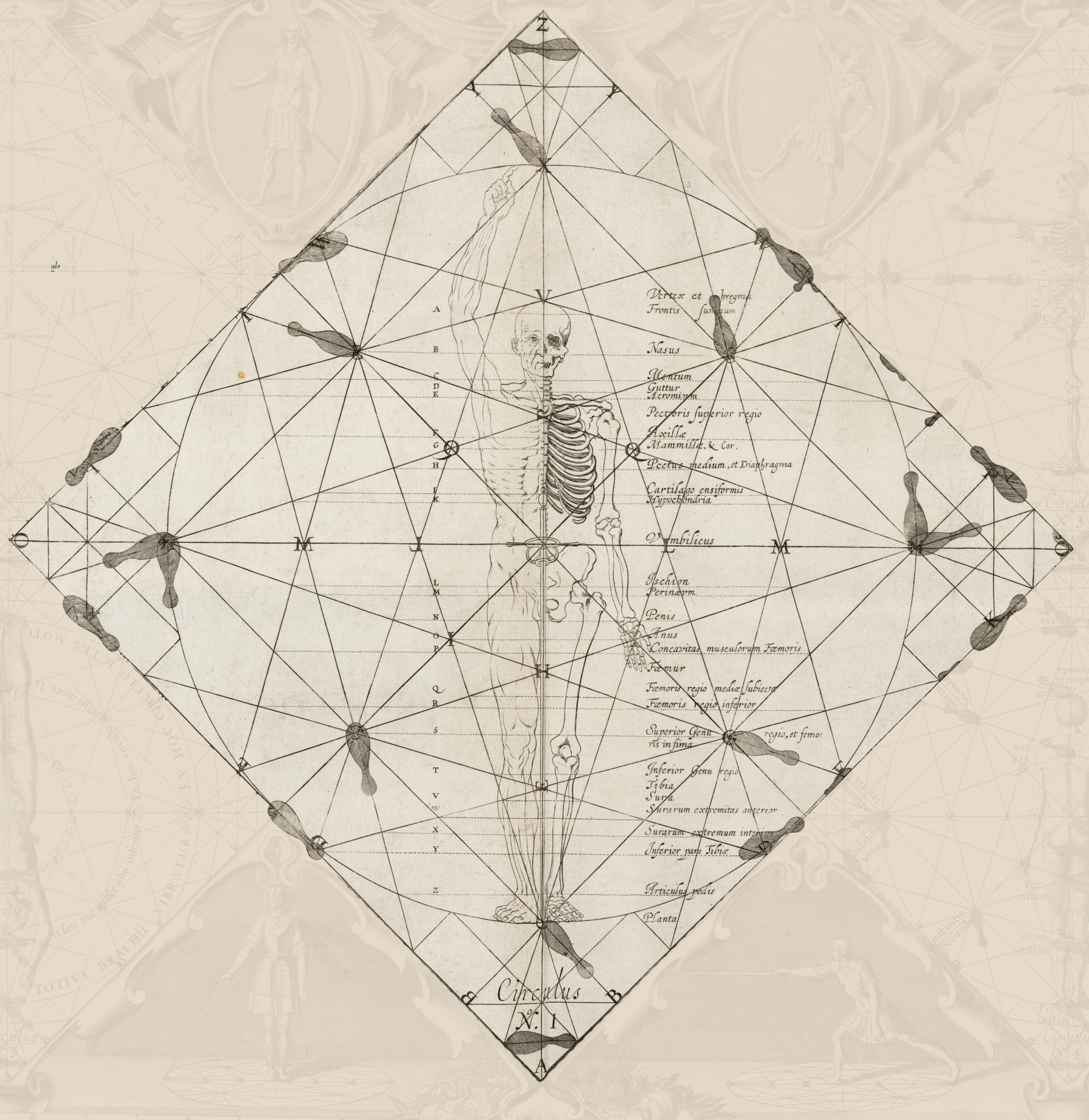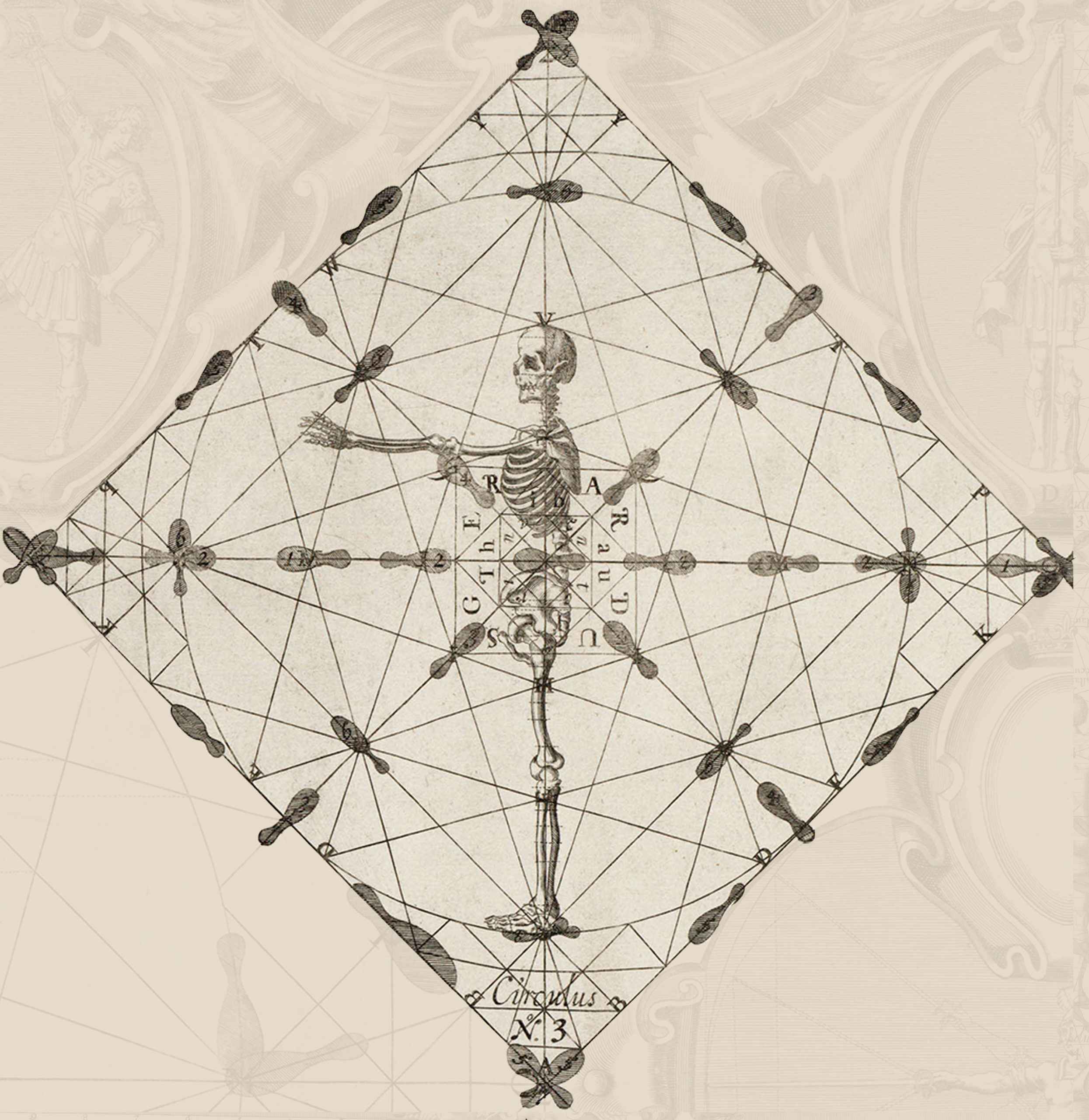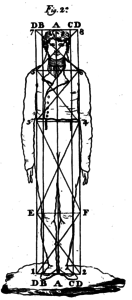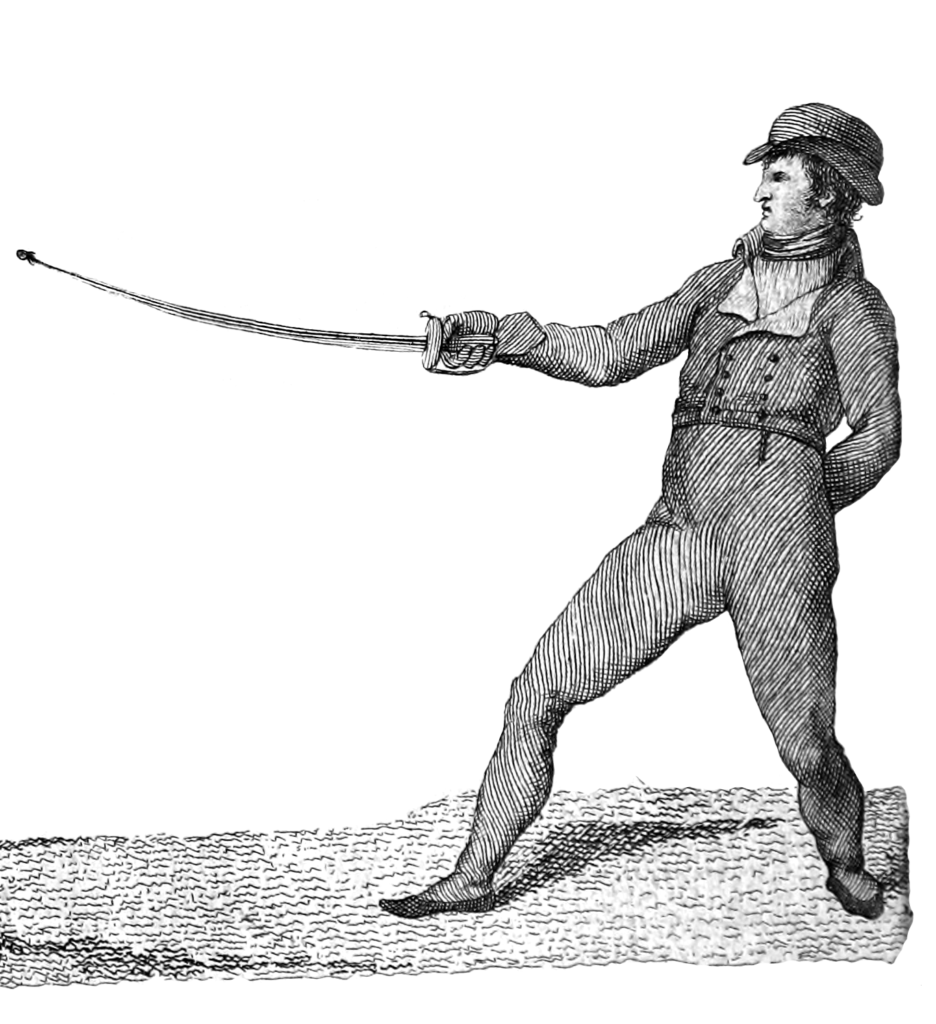367. This name is given to the wounds that are undertaken at the same time that the contrary begins to execute the one they intend to inflict. They are the most difficult to practice in the fight, at the same time, they are the most brilliant, and they certainly prove the skill of the fighter, as they are the result of a quick imagination, fertile, and adorned with the knowledge of the distances, movements, and oppositions, and likewise supported by a firm heart; necessary circumstances which cannot be acquired by other means than constant exercise and good direction in the most solid principals of the art. The difficulty of this operation is to know the time and opportunity for their execution, for it should be noted that only in the defensive measure, either in the first or at any other time of the battle, should they be practiced, considering that only a very thoughtful and long exercise can provide all of the necessary measures to carry them out without danger at any other distance. But, whoever is able to apply the entire doctrine of oppositions in the greatest ardor of combat will achieve glory in every part of it.
Timed Blow on the Thrust of Third
368. If, going to assert the guard of fourth, it is observed that the enemy frees the point of his weapon to execute a thrust of third, take care as it comes if it is not sufficiently covered*. In case you bring all of the necessary opposition, then as you see the beginning of the movement to come deep with the thrust, leaving the line one third on your left side, advancing a half place, and turn the hand in third with good opposition and the other circumstances said in the thrust of third (§ 99), direct the point to the right shoulder, unless the enemy’s arm comes very high since, in this case, it should be directed to the underside of its base. Dispose to advance on this blow with the object of effecting the wound before the opponent finishes his deep step. If the enemy thrusts uncovered, omit leaving the line, and in accordance with the other requirements, inflict the blow.
*Throwing or coming covered refers to when an offense is executed according to what was taught in the treatment of oppositions (§§ 67-75).
Timed Blow on the Thrust of Fourth
369. In the case where the chosen guard is third, in the moment that the contrary comprehends his deep step, thrust free in fourth, leave the line to the right side on third without advancing and, according to the precepts given when treating on the thrust of fourth (§ 83), recover presenting the point to the face, and if this is found covered, go to the chest, executing a timed blow of fourth. Your motion of profile in this shot excuses the advance required in the previous. If the enemy throws his thrust uncovered on the inside line, there is no need to leave the line.
Timed Blow on the Thrust of First
370. If the guard that you took to await the enemy was fifth, and they, freeing above, step deeply, throwing a thrust of first with the hand at the height of the superior plane or lower, then leave the line one third on the right side without advancing or varying the hand, direct the point to your opposite, profiling under the circumstances described in the thrust of first executed with the hand in third (§ 288). However, if the guard of the adversary comes higher than the superior plane, omit leaving the line with both feet, substituting the withdrawal of the left on the right diagonal.
Timed Blow on the Thrust of Second
371. Having elected to assert the guard of sixth, the enemy then frees and steps with a thrust of second, making opposition without leaving the line, welcome him with a wound presenting the point to the diameter of the chest, moving square along with all the other circumstances, conforming to what was said in the treatment of the thrust of second (§ 100). And only in the event that the contrary brings the guard lower than the superior plane will it be necessary to leave the line on the left side, one third, advancing half and direct your point to the shoulder of your contrary. Note that your own guard should remain at the height of the superior plane, the arm well extended, and the body inclined forward.
Opposition to the Timed Blows
372. The timed blow, as I have already said, is one of the most delicate operations of the skill. So, I charge those who devote themselves to the exercise of arms that, without being very well versed in the entire doctrine above, do not set out to execute these wounds, since lacking for these the knowledge of time and good opposition you may very well, far from offending the enemy, aid his intention, or succeed in both of you being injured. But, as ever, you can undertake the contrary, it is necessary to be well versed in the manner of freeing. If, attempting a free thrust, the contrary opposes it with a timed blow without leaving the line, to make it ineffective, it will suffice to have thrown your thrust with all of the appropriate oppositions. In this case, leaving both points equally remise, the timed blow will not make any other effect than that of a simple remove by means of the opposition.
373. When the enemy opposes a thrust with a timed blow leaving the line, it is necessary only to not the movement of the feet and the direction of the point while suspending the step or at least not balancing forward, making the attempted offense in a graduation, thus covering the attacked point. But, if the speed of the step limits the time for graduation, replace this by increasing the opposition of the arm and weapon, and withdraw your left foot on the diagonals with this order. If the wound was attempted to the inside, withdraw on the right diagonal, and if on the outside, on the left. In this case, the opposition has the same defensive effect as if the contrary had attempted the blow on the line, your adversary well covered.
Timed Blows on the Cut
374. Whenever the enemy, at any time in the battle, forms a cut to any part of the body after repairing a thrust with third, needing to bend the elbow for the formation, to remove his weapon by the point of the removal, walking to the right shoulder to begin his execution, In the time, then, employed in completing the formation, being free until the guard arrives at the right vertical, turn the hand in fourth, and cut the wrist with a half cut. But, the execution of this blow must be accompanied with a leap back in the Spanish step.
Timed Blows on the Reverse
375. If, on a removal of fourth, the enemy tries to achieve a reverse to any point, observe the time of its formation and, before it concludes, turn the hand in third and discharge a half reverse to the wrist, without omitting the leap back at the same time as the execution.
376. When the formation of cutting wounds is made from below the guard, the only variation that the timed blow admits is that of executing in distinct points of the arm. For everything else, there is but to observe the movement of the formation and, in this, look for the place that the arm occupies to direct to it a half cut blow or a reverse, conforming to the circumstances of the previous wounds.
Opposition to Timed Blows on the Cuts
377. Opposing these timed blows requires great attention to the enemy’s wrist. After you notice the first movement of his wound, desist from the attempt and, with greatest speed, place the guard and the strong of the blade in the part that the mid-arm used to occupy.
Timed Blows Graduating
378. If, fixed in the common guard and the defensive stance, the enemy takes that for offense and of fourth, it must be inferred by this that he intends to throw a thrust of fourth by the sabre. In this case, before he begins his movement, without removing the arm from its place, and using only the wrist, graduate your own sabre, presenting the point even more inside than your opponent requests for the offense. After you notice the first of the deep step for the thrust, withdraw your left foot on the right diagonal, directing the point above his sabre, receiving it in this, raise the guard at the same time to the height of the superior plane, or a little more, and extending the arm, inflict a wound at the time when he thought to achieve his. But, to have full security in this shot, it is necessary to wield the sabre strongly in order to resist the action of the enemy.
379. When, instead of the guard of fourth, the enemy takes that of third and the stance stated in the previous shot, it must be assumed that he is ready to execute a thrust of third by the sabre. In this case, before he begins his shot, graduate the arm and with draw the left foot on its diagonal, placing the hand at the height explained, extending the arm well and turning fully to third, and in the time that the enemy makes their step for the wound, direct the point to their face, inflicting a blow of third, held firmly.
380. The contrary can take the guard of sixth, and the offensive stance, intending to inflict a thrust of first by the sword with the hand in third. In this case, graduate your own weapon as in the others, observing the moment in which he directs his offense for, in the same time, take the left foot out on the right diagonal and place the guard at the height explained, turning the hand in fourth, extend the arm well, and direct the point to the chest of the contrary, recovering with a timed blow of first.
381. The contrary, taking the guard of fifth to inflict a thrust of second by the sabre, graduate your own, and in the moment they step with their offense, take the left foot out on its diagonal, raise the guard to the height said, extending the arm and turning the hand to third, without disengaging the sabres, direct the point below and inside the arm with a timed blow of second.
382. These timed blows and those previous only differ in that these precede the graduation which those anticipate, in the guards with which the enemy waits. Note that the timed blows are always of the same species and name as the thrust the contrary wants to achieve.
